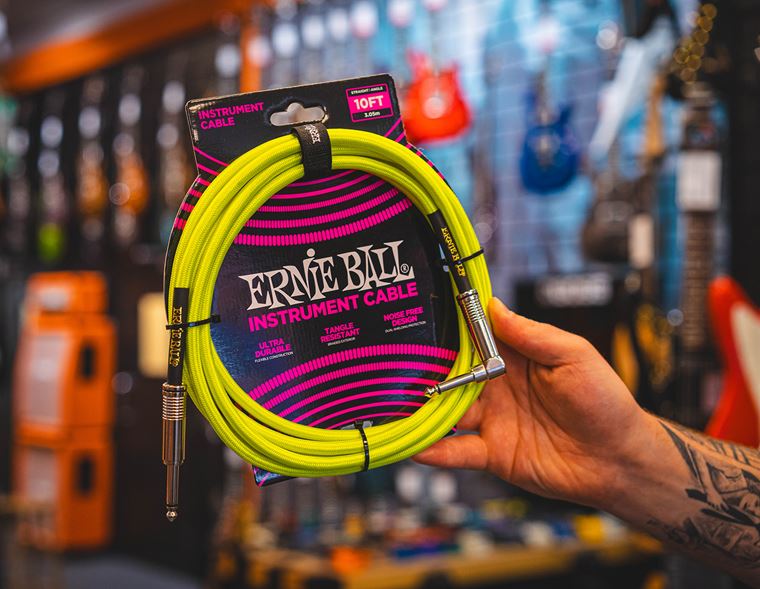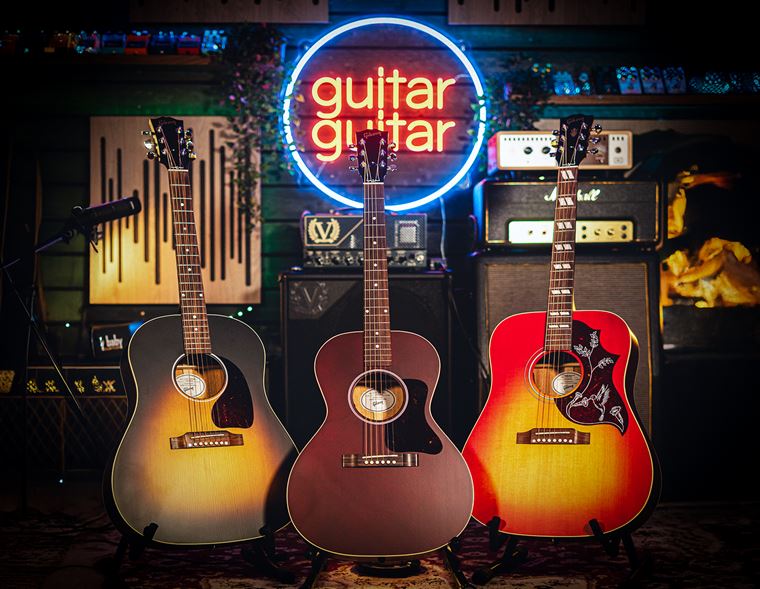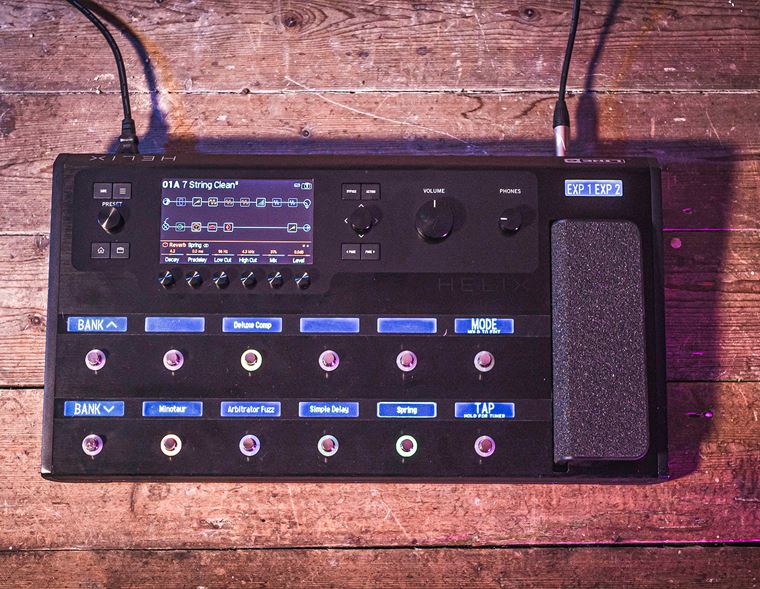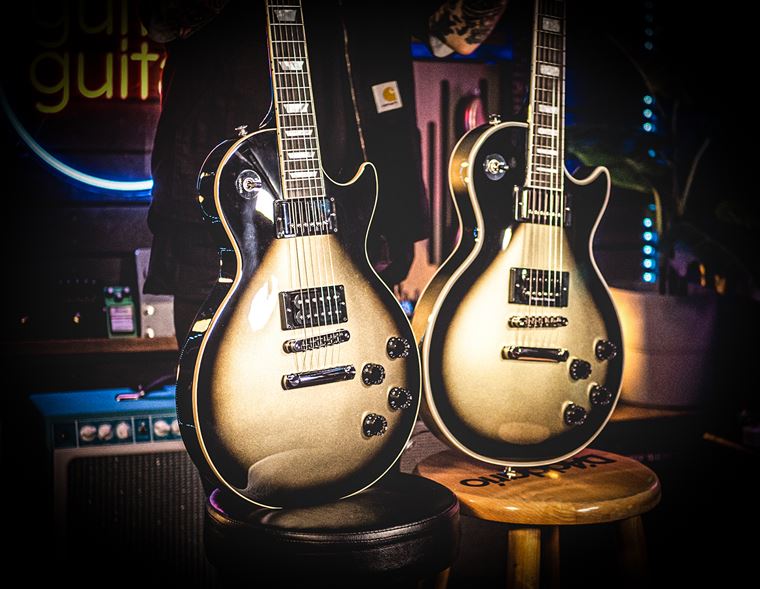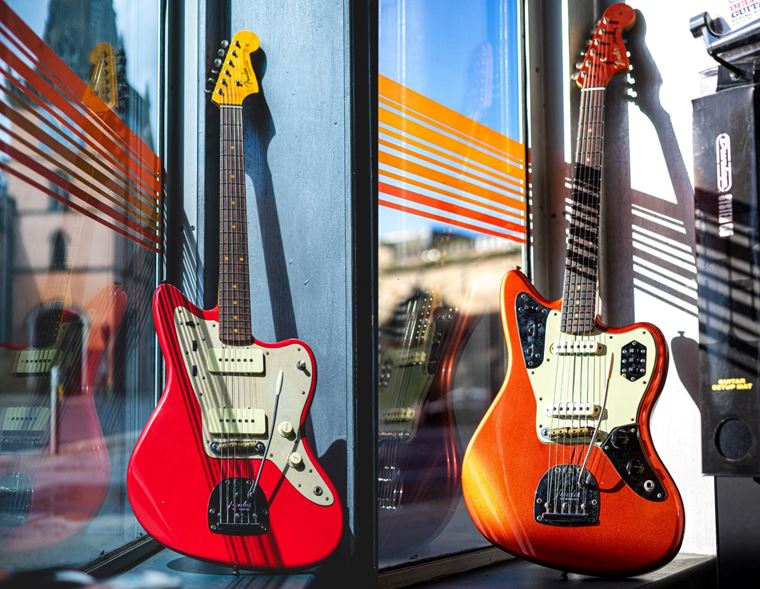Best Epiphone Les Pauls 2025
The Les Paul: the Tyrannosaurus Rex of electric guitars. Mighty, iconic and blessed with a sound that no other guitar can conjure, the famous Les Paul is a live wire of tone built around a classically beautiful shape.
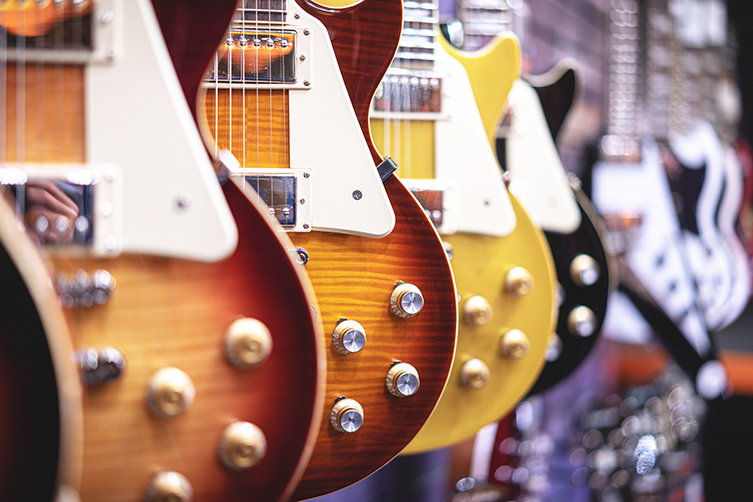
Gibson Les Pauls are the originals, but sister brand Epiphone are official too, so players on a tighter budget can still get in on that inimitable sound and look, without necessarily having to stretch to USA prices. Epiphone’s best loved model is easily the Les Paul, and for that reason, they make a ton of variations. Which one is right for you? It’s a tough one, but we’ll help out today by shouting out ten of our favourites, based on hundreds of hours of hands-on experience. We don’t think anything beats getting into a guitarguitar store and playing a few for yourself, but in anticipation of that, here are our top Epiphone Les Paul picks.
Epiphone Les Paul Standard 50s and 60s
Our first choice today is perhaps the definitive model: the Epiphone Les Paul Standard. This guitar offers an authentic Les Paul experience, thanks to the ‘official replica’ nature of the design. All of the curves and carves are here in their correct places, so if you squint your eyes from a distance, it can be difficult to tell this guitar apart from its USA-made Gibson sibling.
The authenticity stems from the mahogany body to the set neck construction, with all of the binding, trapezoid inlay work and finishing that you’d hope for. Whether it’s a sunburst or the famous Goldtop, you’ll be able to choose from a selection that are all based on historic Gibson models.
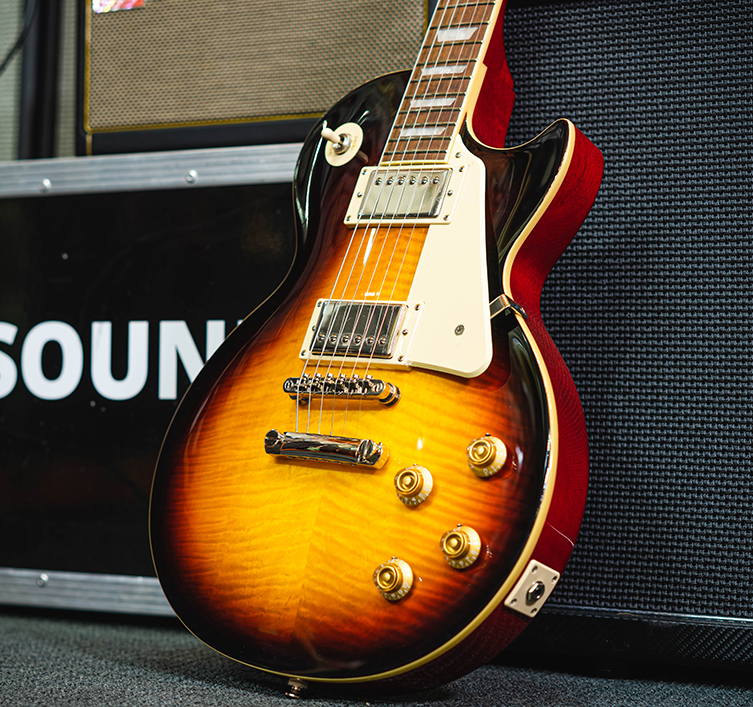
Sonically, we are in a close approximation to vintage LP territory here, thanks to the natural sustain and thick tone of the mahogany, and the good quality ProBucker pickups, which offer slightly different winds on the bridge and neck pickups to further tune the tone. Whilst it would be unrealistic to compare this affordable replica to an actual vintage Gibson, we’d say that the tones in and of themselves are excellent and sound deep and mature. Bang for buck is large here, basically!
The real differences between the 50s and 60s models are in the neck profiles and available finishes. The Epiphone Les Paul Standard 50s has a generously rounded neck carve, aiming its sights on those famous 1958-59 necks found on ‘Holy Grail’ Les Pauls. Choose from a pair of sunbursts or the goldtop for this model: they all look great.
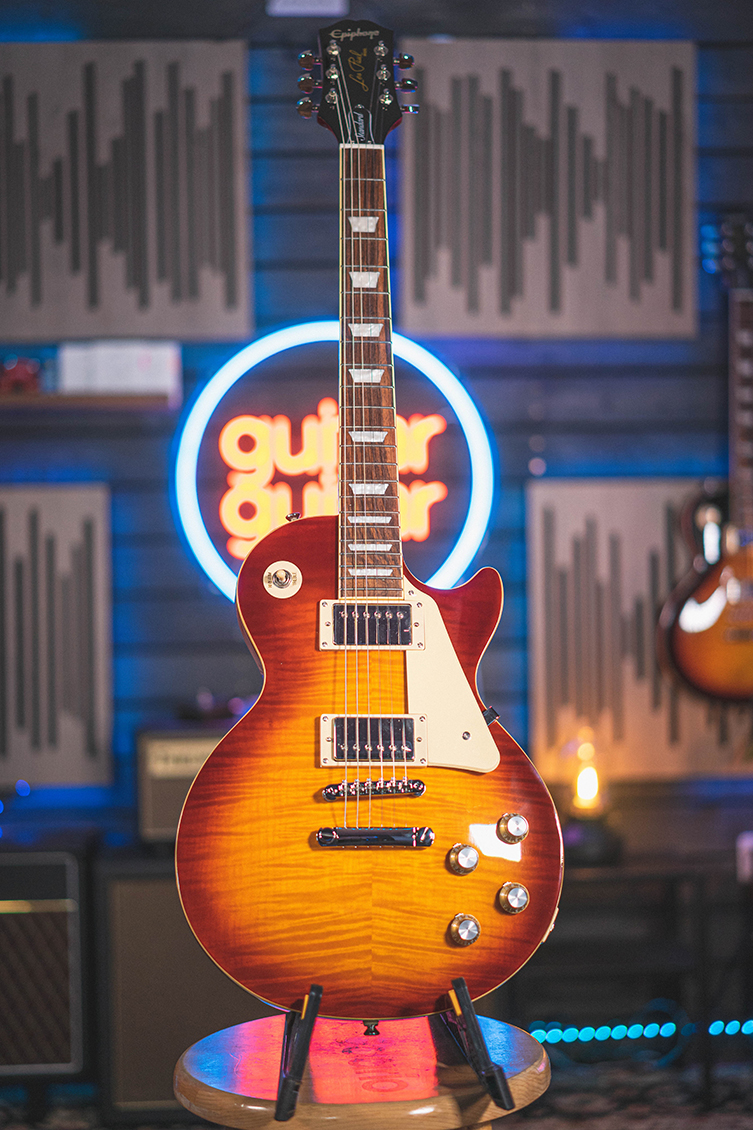
The Epiphone Les Paul Standard 60s, by comparison, uses a slimmer neck carve, similar to those found on vintage examples from 1960 onwards. Neither neck carve is better: it’s a matter of preference, so make sure you try both before you start falling in love with a particular colour, especially since the finishes for the 50s guitar are not available on this one! The 60s LP Standard has its own range of equally gorgeous bursts, so choosing your favourite will be the biggest problem!
Epiphone Les Paul Custom
If you want to go ‘full fancy’, then Epiphone offer you a splendid take on the Les Paul Custom, with its famous ‘tuxedo’ finish. Back in the day, Mr Lester Polfuss himself asked for this style to be created for his frequent TV appearances, and requested the multiple layers of binding to be added to the edges of the entire guitar so that it could be better seen on early black & white TV sets.
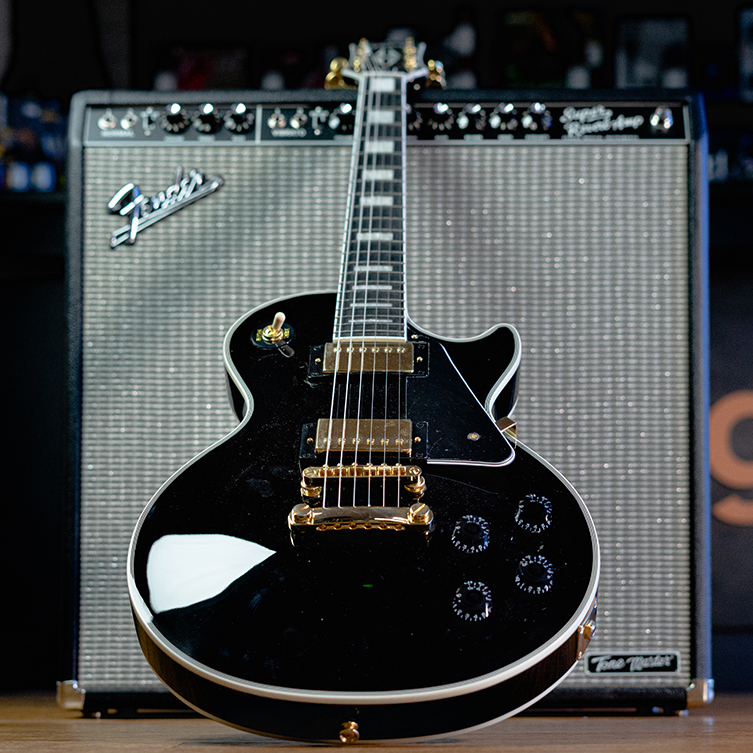
This affordable take on the legend retains all of the decorative details, including the split diamond headstock decoration and full block inlays. It’s a stunner, whether you choose the Ebony model or the Alpine White. We don’t need to tell you that the Les Paul Custom is one of the coolest guitars ever made: you already know this. What we can tell you is that these Epi models walk the walk as well as they talk the talk, so if you need some Custom swagger and glamour in your life, you can get it right here.
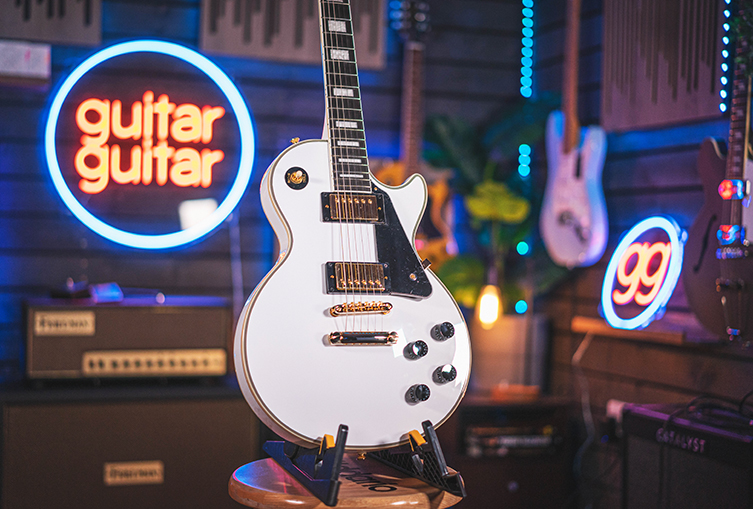
Epiphone Les Paul Studio
You could, of course, go the entirely opposite way and eschew all frivolous signs of decoration by opting for the Epiphone Les Paul Studio. A favourite of harder-rocking bands in the metal and Industrial scenes, this stripped-back-for-battle model keeps everything you need for playability and tone, and drops the rest. No figured top, no binding, no messing about.
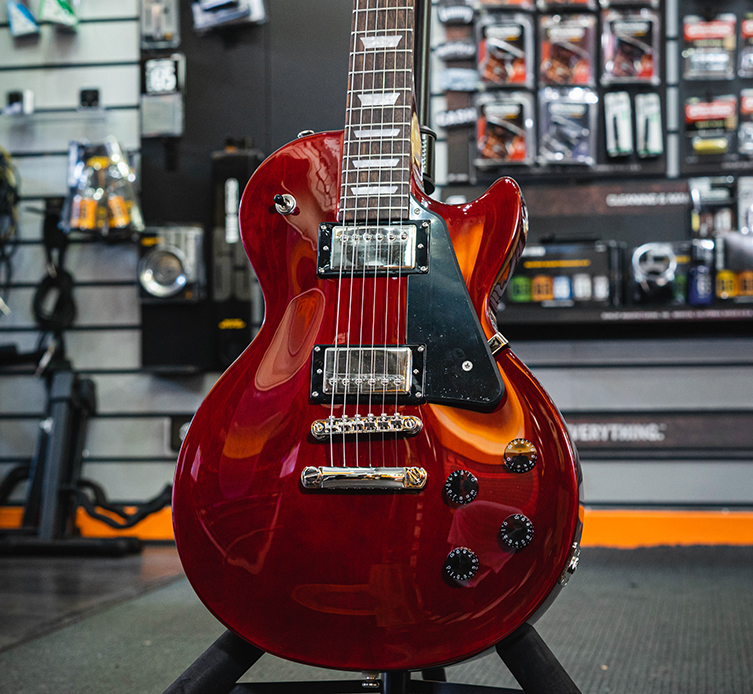
Not to be confused with the more beginner-friendly Studio E1 model, the Les Paul Studio has a full thickness body and a set neck, just as Les Pauls should! Available in four finishes and armed with Alnico Classic pickups, this guitar is the no-nonsense dream for all gigging players.

Epiphone Les Paul Classic
Versatility and unique looks are built into the Epiphone Les Paul Classic. Matte ‘worn’ finishes (including gold and purple in addition to black and sunburst) and open coil ‘zebra’ pickups give this model a look that sits quite apart from the rest, whilst staying within those ‘classic’ parameters.

Those open coil zebra humbuckers are Alnico Classic Pros, and there’s extra tonal choice involved via a push/pull coil tap switch. If you need funkier, slinkier sounds to accompany the acknowledged brute force of an LP, then this model may be the one for you!
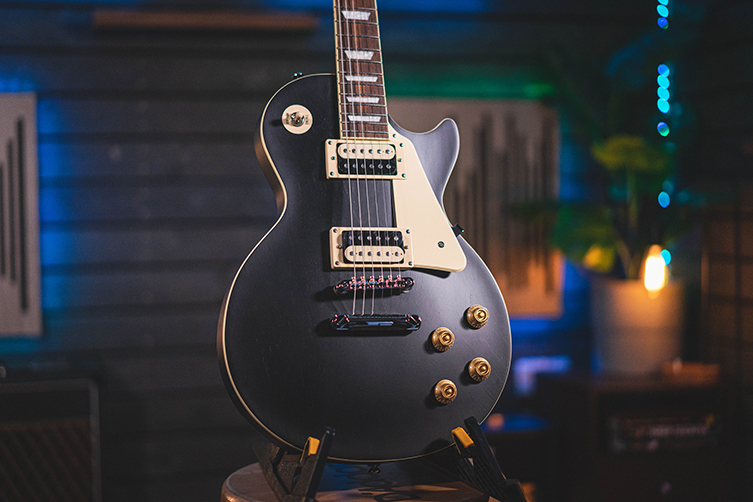
Epiphone Les Paul Modern
Pushing the stylistic envelope slightly further, the Epiphone Les Paul Modern references the Gibson model of the same name, with similarly future-forward looks and features. We totally love the two-tone effect you get with the metallic top finish and natural back, particularly with cool colours like Graphite Black and Sparkling Burgundy!
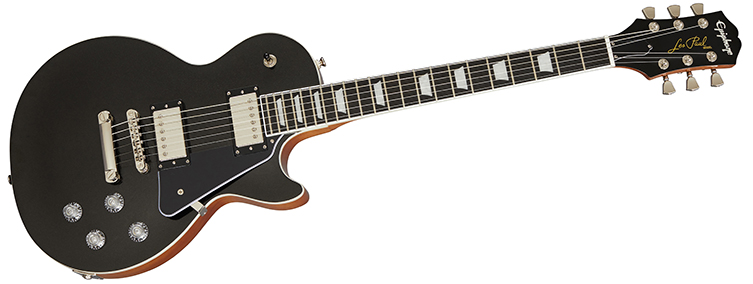
The Probuckers on here can be coil split, just like the Les Paul Classic we looked at. However, this Modern LP also features switchable out-of-phase sounds, plus there’s a treble bleed on the volume control which we actually find to be enormously helpful!
If you don’t find that you crave a tiger-top Sunburst look for your prospective Les Paul purchase, we think this is definitely one to pay close attention to.
Epiphone Les Paul Junior
When is a Les Paul not really a Les Paul? Well, we think it’s when it offers an entirely different sound, vibe and look, like this awesome Epiphone Les Paul Junior. Initially designed for beginners, it didn’t take long for players to cotton on to the fact that this guitar design is enormously effective.
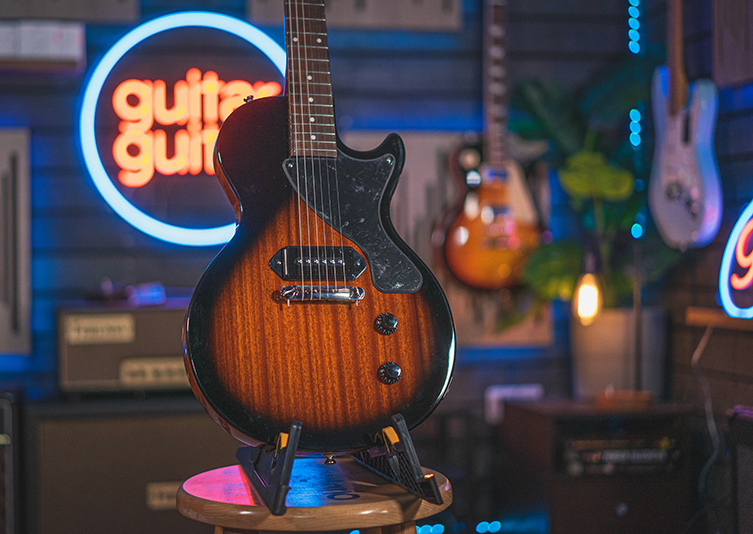
Boasting a mahogany body, set neck and a single P90 pickup, there’s really very little to trip up on here. Grab that thick vintage 50s neck and blast away, safe in the knowledge that pretty much all styles sound great through a good P90 pickup. Juniors are real palette cleansers, if you get us: you stop fussing and second-guessing, and just get on with having fun playing!
The neck on this one is what sells it for us, but we just love the fact that a great LP Junior is available at this most reasonable of price points. Love this!
Epiphone Les Paul Special
What is slightly more special than the already excellent Les Paul Junior? How about an extra pickup and maybe some binding along the fingerboard? Will that do?
Good, then you’ll definitely be on board with the Epiphone Les Paul Special! A close replica of the other student model from Gibson, the Special simply adds another great sounding P90 pickup to the neck position, along with extra controls to manage it all. If you need some warmer tones - or just a bigger selection of tones in general - but love the Junior’s vibe, then it will stand you in good stead to plug one of these in too.
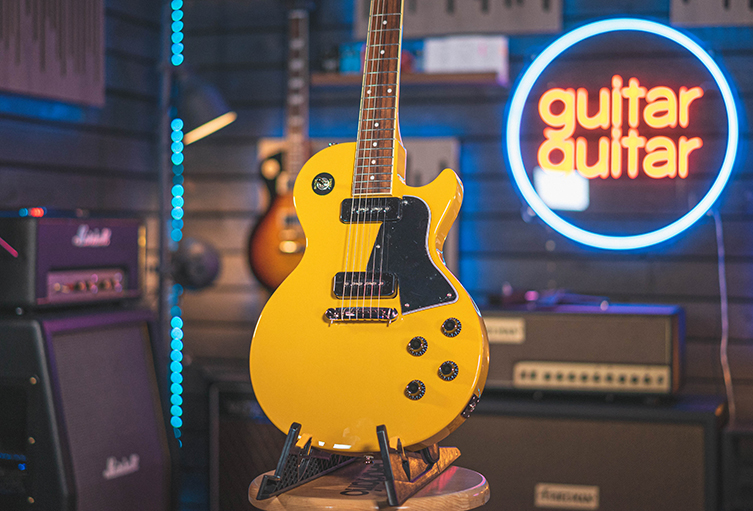
Is the single pickup slightly cooler? We’d say maybe, yes, but then it’s all a matter of what you need and what works for you. Plus, this comes in TV Yellow, one of our all-time favourite finishes!
Why is it called TV Yellow? Why, so that it would show up as an eye-soothing neutral grey on those old black & white TVs, of course!
Epiphone 1959 Les Paul Standard Outfit
If, however, your idea of a good Les Paul sits firmly in the Led Zep/British Invasion mould, then this particular model may interest you just a bit. It’s the Epiphone 1959 Les Paul Standard Outfit and it’s a limited edition rendition of that holiest of holies, the ‘59 Sunburst Standard.
We’ve already seen Epiphone’s 50s LP Standard, so how does this more expensive option equate? Well, it’s actually pretty different, so here are the main extras you gain with the bigger spend:
- The top is a veneer of AAA grade figured maple for a stunning look
- The pickups are Gibson BurstBuckers (models 2 and 3) for authentic tones
- The neck has a ‘59 profile, which has been hand-rolled for extra detail and shaping
- The circuitry includes CTS pots (top quality) and 50-style wiring
- A lovely hard shell case is included
That’s quite a few upgrades! For those who haven’t heard about ‘50s wiring’, in a nutshell, it’s a method of wiring the tone capacitor to the middle lug of the volume cap. In player’s terms, this means you’ll get a brighter sound that doesn’t lose any high frequencies when the volume control is turned down. For a beefy, dark sounding guitar like a 59-style Les Paul, this is a real key ingredient in achieving great tone, so definitely check it out!
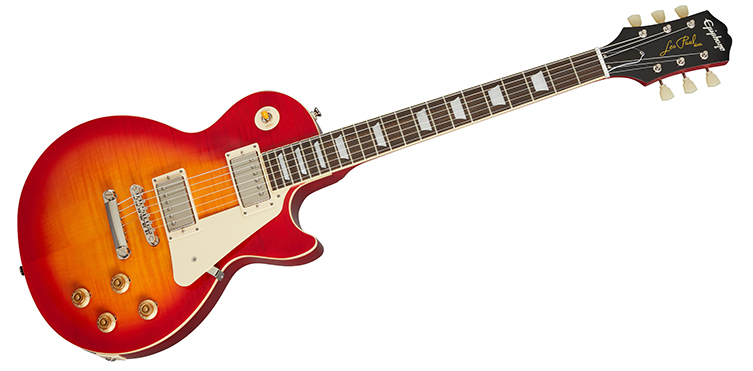
Epiphone Jared James Nichols Gold Glory
It’s another shout out here for our pal Jared James Nichols, whose signature Epiphone is as cool as it gets. Basically, if you took the simplicity and sensibility of a Les Paul Junior, and married that with the glitz and grandeur of a Les Paul Custom, you’d end up with the Epiphone Gold Glory.
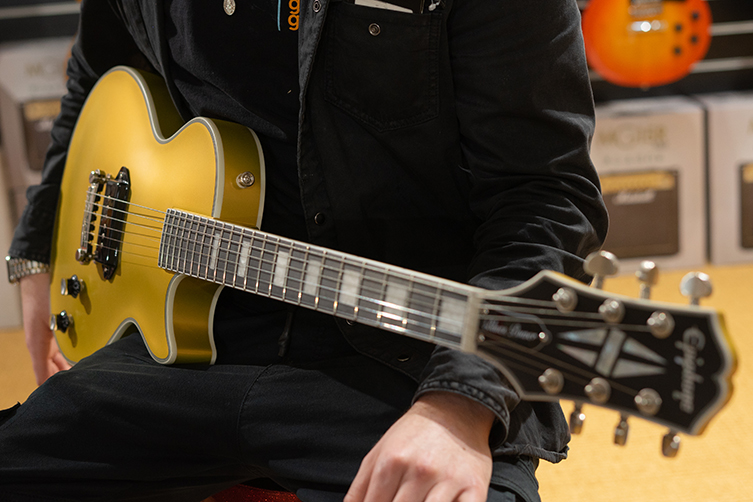
An excellent neck feel, a wondrous pickup and stunning looks add up to a guitar that stands out from the crowd and practically plays itself. We’ve yet to meet anyone who doesn’t love this axe upon trying it out: it just has that cool addictive quality to it!
Epiphone Jerry Cantrell Wino Les Paul Custom
Jared may have Blues Power all wrapped up, but for gargantuan grunge and metal masterpieces, it’s Jerry Cantrell all the way. The Alice in Chains master knows his way around great tones and seasick riffs, and his main squeeze is a wine red LP Custom. The Epiphone Jerry Cantrell Wino Les Paul Custom is an affordable distillation of the man’s Gibson signature model, which manages to pour every ounce of dark swagger into its mahogany body.

It’s all classic stuff here, with the addition of some personal Cantrell appointments such as mismatching pickups, a ‘JJ’ logo on the back, and Jerry’s name on the truss rod cover. For fans, it’s the perfect thing to lay down some evil AIC riffs: for everyone else, it’s simply an excellent Les Paul that looks awesome and isn’t too covered in artist references.
There’s Plenty More Where These Came From
So, those are our top ten picks for Epiphone Les Pauls! This is actually just the tip of the iceberg in terms of what’s available, so we suggest the same thing we always suggest at the end of these blogs: come into your nearest guitarguitar store and line up a few of your favourites for a test drive! Give us a shout in advance to make sure we have the models you’re interested in, but we do keep as many Epiphone guitars on our walls as we possibly can, so your odds are good if you just chance it!
Either way, best of luck on your hunt for your new Epiphone Les Paul!


